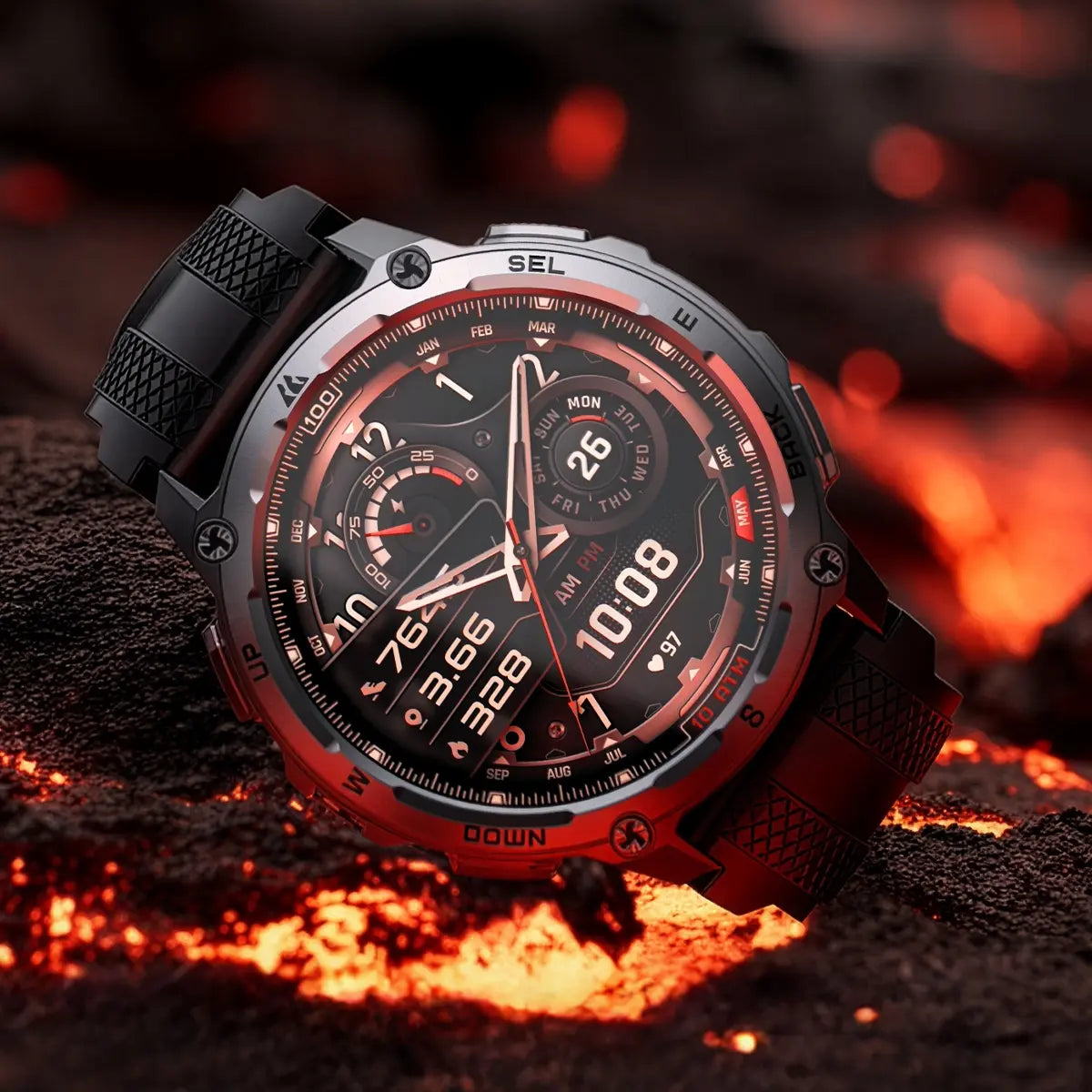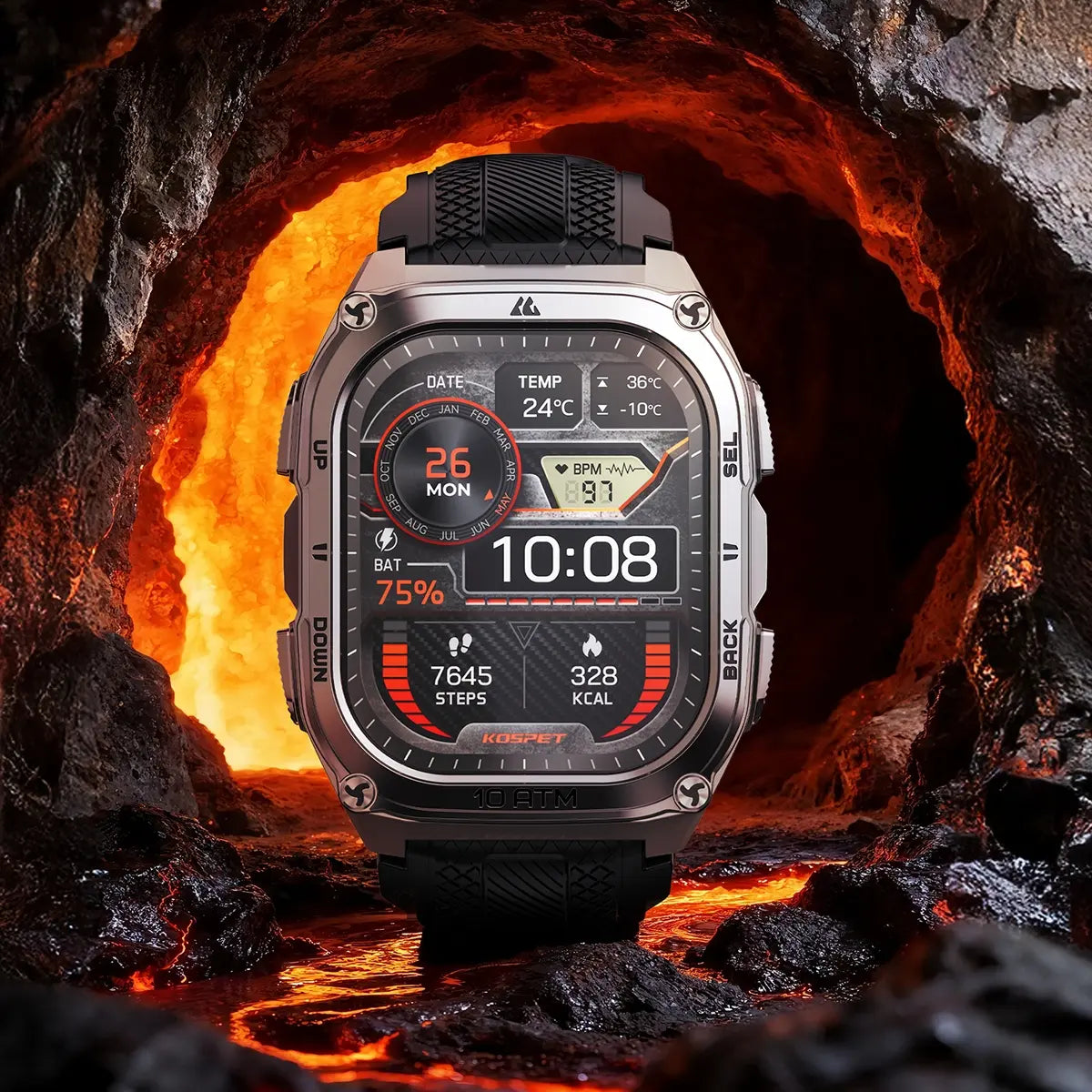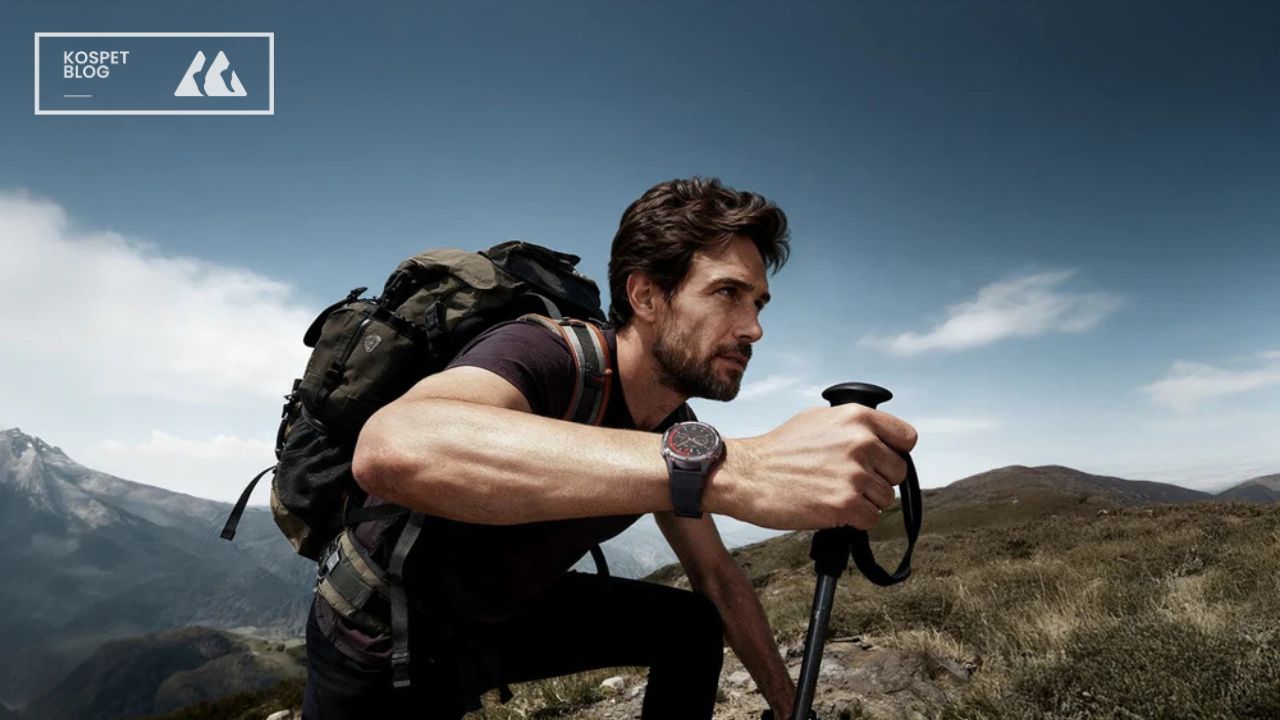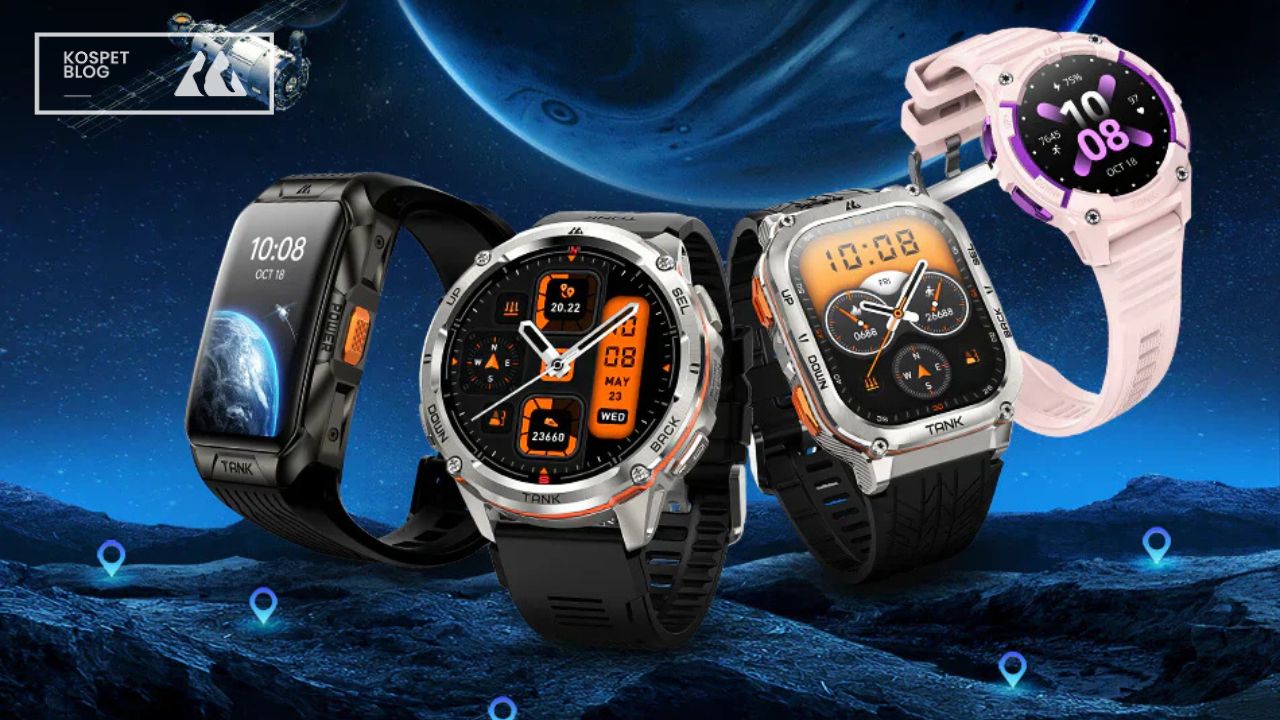A GPS watch for hiking is more than a gadget—it’s a safety tool. Unlike smartphones, these devices offer multi-day battery life, rugged durability, and reliable offline navigation, giving hikers confidence on any trail.
Why a GPS Watch Matters for Hiking
For seasoned hikers and wilderness explorers, a GPS watch for hiking is no longer just a gadget—it’s essential gear. Smartphones, despite their convenience, struggle with two chronic problems in the backcountry: short battery life and unreliable reception.
A dedicated hiking GPS watch addresses both, offering multi-day power reserves, rugged construction, and precise satellite navigation that works far from cell towers.
When you are 30 kilometers into a trail, with unpredictable weather and limited resources, these differences can mean the line between confidence and vulnerability.
Key Features Hiking GPS Watch

Navigation Accuracy
Navigation accuracy is one of the most critical factors in a hiking GPS watch because terrain often works against reliable positioning. In deep valleys or under thick tree cover, single-band receivers frequently drift, leaving hikers uncertain of whether they are truly on the trail.
Multi-band GNSS technology addresses much of this problem by connecting to multiple satellite constellations at once. This reduces the errors caused by signal blockage or reflection that are common in rugged outdoor environments.
A 2024 study in the International Journal of Geographical Information Science found that multi-band receivers improved positional accuracy by 40–60% under canopy conditions compared with single-frequency devices. For hikers, that margin of improvement can mean the difference between staying confidently on course and straying dangerously off it.
Battery Life
For multi-day treks, battery life is more than convenience—it is safety. Continuous GPS drains power quickly, and a dead watch means no navigation. With solar assist and power modes, today’s top models can last several days to over a week.
In the Backpacker Gear Report 2023, 82% of thru-hikers ranked battery longevity as the most important feature, even above maps or fitness metrics.
Durability and Build
Durability is more than marketing language; it determines whether a watch can survive real backcountry use. Trails expose equipment to repeated shocks, scratches, sudden rain, and wide temperature swings. A fragile device can quickly become useless when these conditions are unavoidable.
Outdoor-grade GPS watches are built with reinforced casings, scratch-resistant sapphire glass, and high water-resistance ratings. Many also undergo testing under military standards to ensure resilience against vibration, thermal stress, and immersion.
Consumer Reports’ 2024 wearable testing found that nearly one-quarter of general-purpose fitness watches failed basic waterproofing or drop resistance. Purpose-built GPS watches, however, consistently passed, highlighting the importance of selecting devices designed specifically for rugged environments.
Mapping and Offline Navigation
GPS coordinates mean little without maps. Preloaded topo maps, turn-by-turn guidance, and breadcrumb trails keep hikers oriented beyond cell coverage.
The American Hiking Society (2024) found that 40% of lost-hiker rescues were tied to inadequate map access, proving offline navigation is a core safety feature, not a luxury.
Health and Performance Monitoring
Modern GPS watches track more than location. Heart rate, sleep, and recovery metrics help prevent fatigue, while SpO₂ monitoring at altitude can warn of sickness before symptoms appear.
A 2024 Wilderness Medicine Review showed early hypoxemia detection reduced high-altitude evacuations by 27%, making health monitoring both a performance boost and a safety tool.
Best GPS Watches for Hiking in 2025
When choosing the right GPS watch for hiking, there’s no one-size-fits-all solution. Each model speaks to a different kind of outdoor user—from multi-day expedition trekkers to weekend hikers just starting out. Below are the most notable models for 2025, their intended audiences, and a breakdown of strengths and weaknesses.
Garmin Enduro 2
Built for thru-hikers, mountaineers, and expedition trekkers who need extreme endurance. This watch is designed for those who may be in the wilderness for a week or longer without access to power.
| Strengths |
|
| Weaknesses |
|
Garmin Fenix 7 Pro
Aimed at serious hikers and multi-sport adventurers who want an all-around outdoor tool combining detailed maps, reliable GPS, and advanced training metrics.
| Strengths |
|
| Weaknesses |
|
Kospet Tank M3 Ultra
The Kospet Tank M3 Ultra is positioned for outdoor enthusiasts just starting hiking. It provides a cost-effective entry into rugged GPS watches, combining durability with a smooth, responsive display that makes both daily use and trail checks enjoyable.
|
Strengths |
|
| Weaknesses |
|
Suunto Vertical
Designed for alpine explorers and global adventurers who value offline global maps and solar-assisted battery life, paired with Suunto’s signature rugged construction.
| Strengths |
|
| Weaknesses |
|
COROS Vertix 2
Perfect for ultra runners, long-distance trekkers, and outdoor enthusiasts seeking excellent battery life and durability at a lower cost than flagship Garmin models.
| Strengths |
|
| Weaknesses |
|
Polar Grit X Pro
Best for fitness-focused hikers and weekend adventurers who want reliable training insights and durability, but don’t need full mapping capability.
| Strengths |
|
| Weaknesses |
|
GPS Watch vs Smartphone Navigation for Hiking

Smartphone Navigation
Battery life is short under GPS load.
Smartphones typically drain within 8–12 hours when running GPS continuously, especially with the screen active. For multi-day hikes, this makes them unreliable unless you carry bulky power banks.
Phones are fragile in real trail conditions.
Even with protective cases, they remain vulnerable to water, dust, and drops. Cold weather also accelerates battery drain, leaving hikers stranded without a functioning device.
Dependence on cellular service limits reliability.
Many navigation apps require live data to update maps or provide directions. Once you move into remote areas, signal often disappears, and unless maps were preloaded, the phone quickly loses its usefulness.
GPS Watch Navigation
Battery endurance is measured in days, not hours.
Hiking GPS watches are optimized for continuous tracking, lasting 40 to over 150 hours depending on the model. Some even extend this further with solar charging, making them dependable on long expeditions.
Designed to survive the outdoors.
Most GPS watches meet military-grade standards for shock, dust, water, and temperature resistance. This durability ensures they keep working even when exposed to conditions that would disable most smartphones.
Offline navigation is built in.
Features like breadcrumb trails, preloaded topographic maps, and track-back guidance are standard in dedicated hiking models. Because they don’t rely on cell towers, hikers can navigate confidently in remote terrain.
Conclusion
The right GPS watch depends on your hiking style, but all share the same advantage: endurance, resilience, and navigation you can trust. For anyone heading into the backcountry, a GPS watch is less luxury and more essential gear.










Leave a comment
This site is protected by hCaptcha and the hCaptcha Privacy Policy and Terms of Service apply.